ALBUM L., 1753
Synonyms :
Leucosedum album (L.) Fourreau (1868) / Oreosedum album (L.) Grulich (1984)
Sedum albellum Besse (s.a.)
Sedum balticum Hartman (s.a.) / Sedum album ssp. balticum (Hartman) J.A.Huber (1936)
Sedum rhodopaeum Podpera (s.a.) / Sedum album ssp. rhodopaeum (Podpera) J.A.Huber (1936)
Sedum curtipetalum Pau (s.a.)
Sedum teretifolium Lamarck (1779) / Sedum album ssp. teretifolium (Lamarck) Syme (1865)
Sedum micranthum Bastard (1809) / Sedum album var. micranthum (Bastard) DC (1828) / Sedum album ssp. micranthum (Bastard) Syme (1865) / Oreosedum album var. micranthum (DC) P.V.Heath (1987) / Oreosedum album ssp. micranthum (DC) Velayos (1989)
Sedum turgidum Bastard (1809) / Sedum album var. turgidum (Bastard) DC (1828)
Sedum athoum DC (1828) / Sedum album ssp. athoum (DC) Maire & Petitmengin (1908)
Sedum clusianum Gussone (1842) / Sedum album var. clusianum (Gussone) Arcangeli (1882) / Sedum album ssp. clusianum (Gussone) J.A.Huber (1936) / Sedum album [?] clusianum (Gussone) Sampaio (1947)
Sedum transbaikalense Schlechtendal ex Ledebour (1843)
Sedum album ssp. eu-album Syme (1865)
Sedum album var. brevifolium Boissier (1872)
Sedum album fa chloroticum Lamotte (1875)
Sedum album var. glanduliferum Ball (1878)
Sedum album var. typicum Franchet (1885)
Sedum album fa genuinum Battandier (1889)
Sedum serpentini J anchen (1920) / Sedum album ssp. serpentini (Janchen) J.A.Huber (1936) / Oreosedum serpentini (Janchen) Grulich (1984)
Sedum album fa murale Praeger (1921)
Sedum album fa lilacinum Beck (1922)
Sedum clusianum fa purpureum Pau & Font Quer (1928) / Sedum album fa purpureum (Pau & Font Quer) Maire (1932)
Sedum album var. purpureum Maire (1929)
Sedum album var. genuinum Hamet (1929)
* Sedum album var. gypsicola (Boissier & Reuter) Hamet (1929) / Sedum album ssp. gypsicola (Boissier & Reuter) Maire (1932) > see below
Sedum vermiculifolium P.Fournier (1935)
Sedum gombertii Sennen (1936)
Sedum paniculatum Kitaibel (1936)
Sedum album var. sabulicola Sampaio (1947)
Distribution : Europe (except for parts of the North and East).
Description (by 't Hart & Bleij in IHSP, 2003) :
Laxly caespitose perennial herbs with basally densely glandular-pubescent, creeping stems with short ascending non-flowering shoots.
Leaves alternate, patent or appressed, sessile and scarcely spurred, linear-cylindrical to ovoid-globose, obtuse or rounded, subterete but somewhat flattened on the upper face, glabrous or sparsely pubescent, green but often reddish, 4 – 20 (-25) mm, flowering branches erect, 5 - 18 (-30) cm.
Inflorescences many flowered rather dense subcorymbose cymes, freely branched, bracteate, bracts 1 per flower, small, pedicels short.
Flowers 5-merous, sepals broadly sessile, basally connate, ovate to triangular, 1 – 2 mm, petals free, lanceolate, 2 – 4.5 mm, subacute, white or rarely pink, filaments white, anthers red.
Cytology : 2n = 34, 51, 68, 85, 102, 136
Note :
1. Sedum gypsicola was described by Boissier & Reuter 1842 from a plant growing on gypsum hills near Aranjuez, Rivas and la Guardia (Spain). It differed from S. album by pubescent-velvety leaves and stems.
Hamet (1929) reduced it to a variety of S. album while Maire (1932) considered it a subspecies of S. album.
't Hart however did not accept either of these classifications, stating that "the 2 species have very different distribution areas". This has turned out not to be correct. Ray Stephenson has found S. gypsicola occurring only 10 km distant of S. album.
In view of the fact that the only difference between S. gypsicola and S. album consists in the papillate leaves of the former which - under extremely wet conditions - even are likely to disappear thus making it indistinguishable from S. album - it is much more appropriate to include S. gypsicola in S. album and not to treat it as a separate species any longer. Link to photos of this form.
2. Plants of Sedum album from Malta differ from previously known S. album plants and have been published as
3. S. album is very variable in size : The reddish plant has been collected in Macedonia, Caravec, 1700 m Bistra, alpine slope with scree & limestone bedrock, N facing. It is an extreme form of S. album ‘Athoum’ (RS09M05). Leaves are 8 mm wide !
The plant next to it is S. album micranthum var. chloroticum (not the smallest album !).
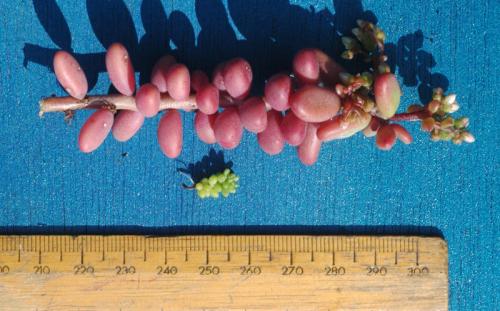
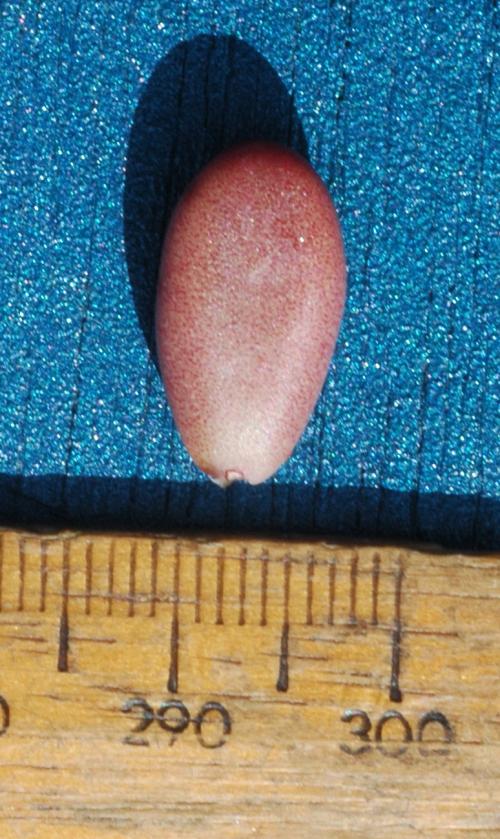
Tunisia - Zaghouan :
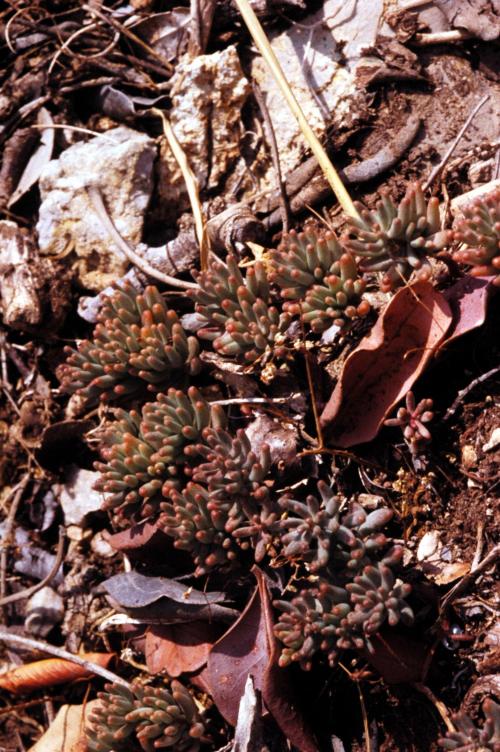
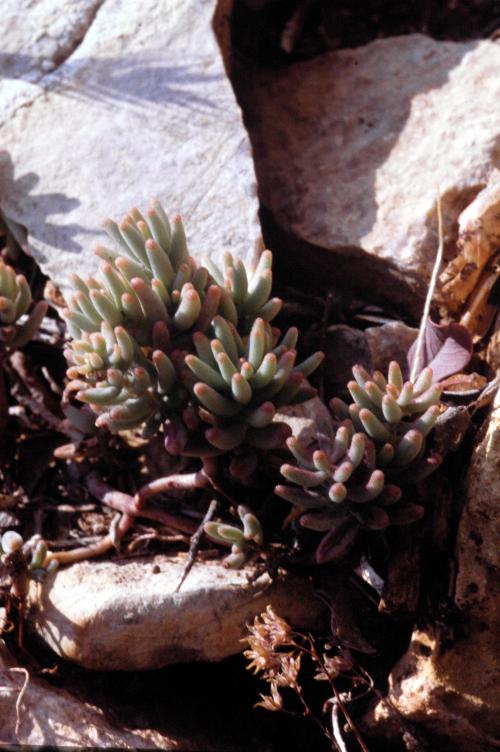
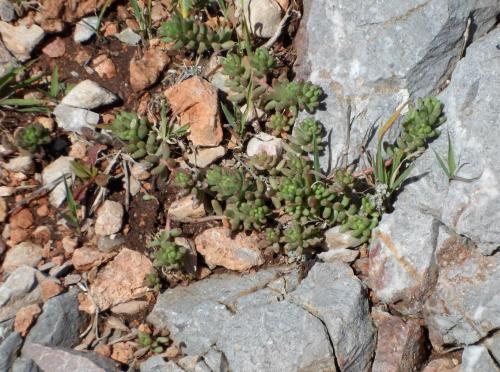
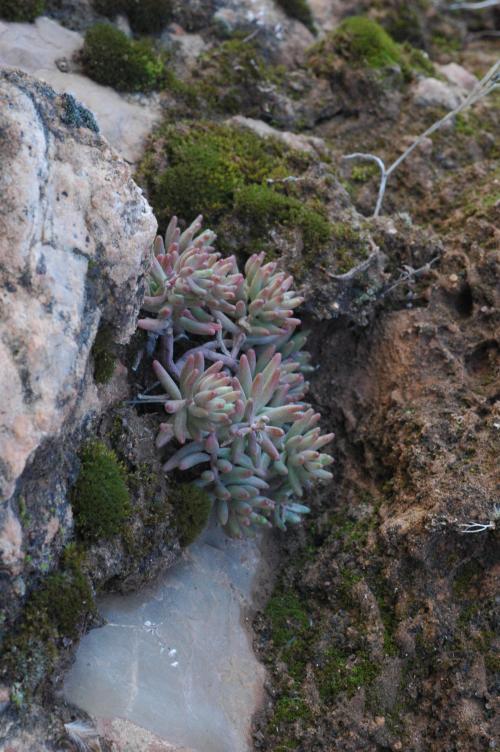
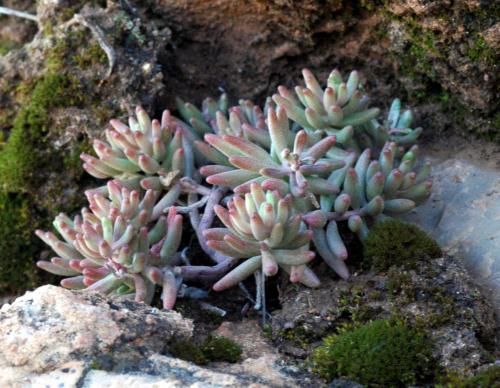
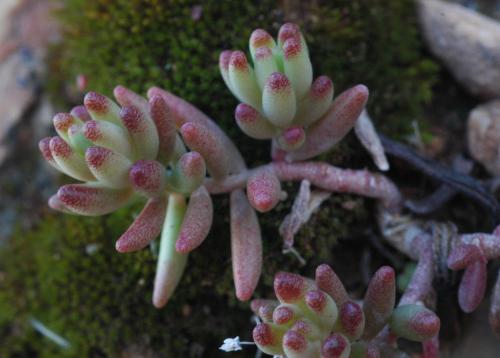
Atlas Mountains :
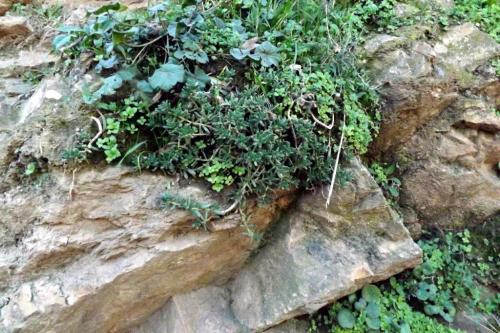
Olympos :
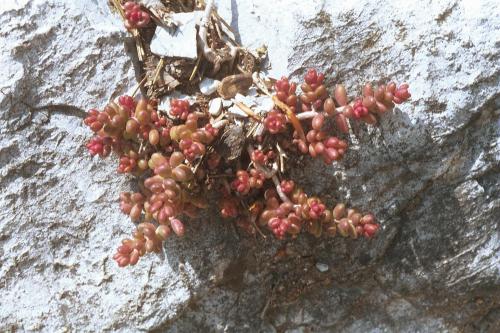
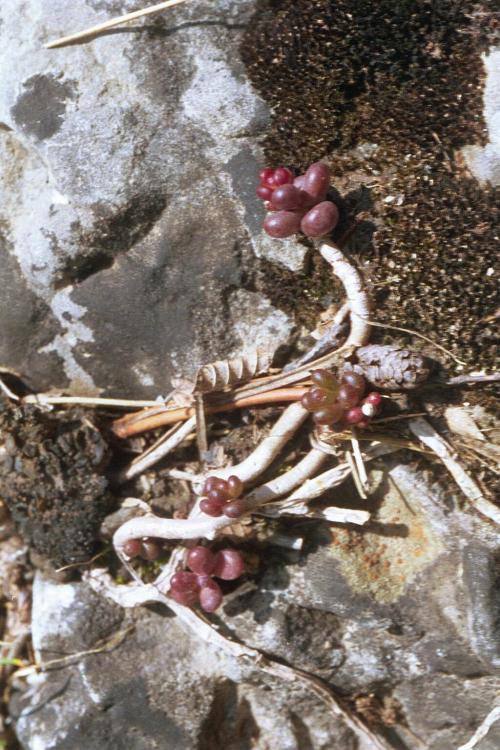
North Macedonia :
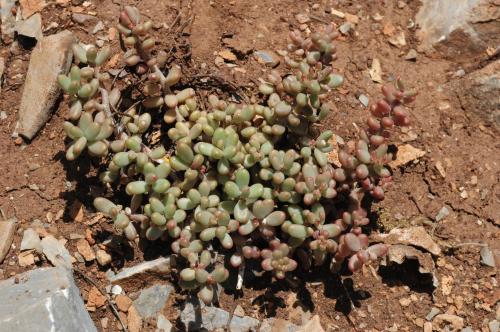
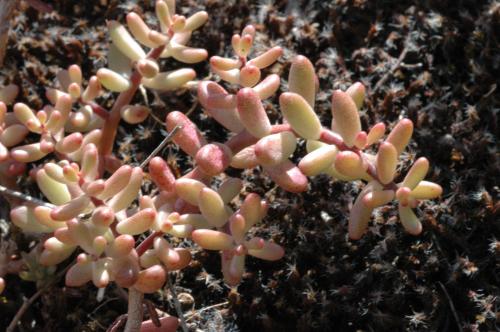
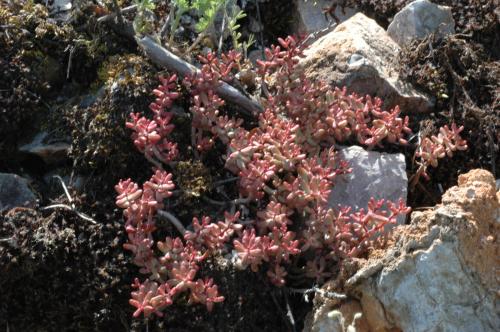
Rhodope Mountains :
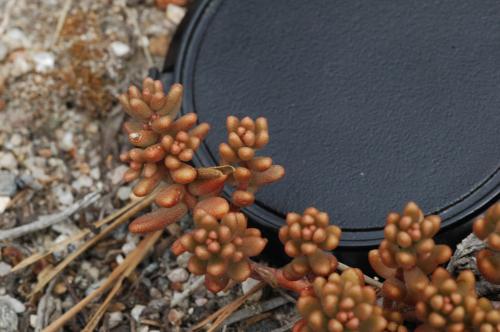
Istria :
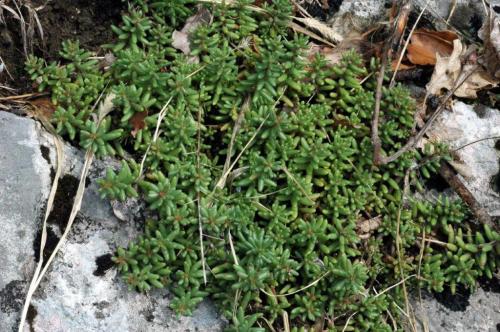
Balkan :
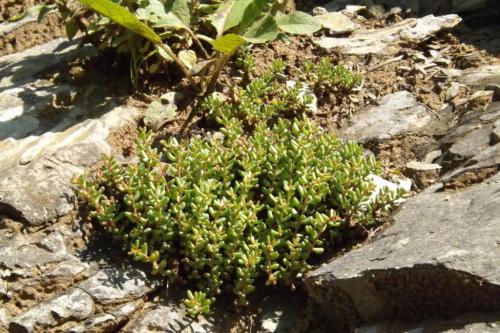
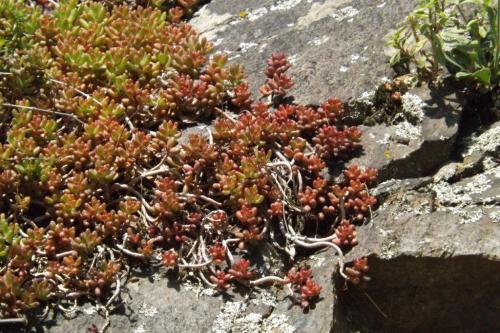
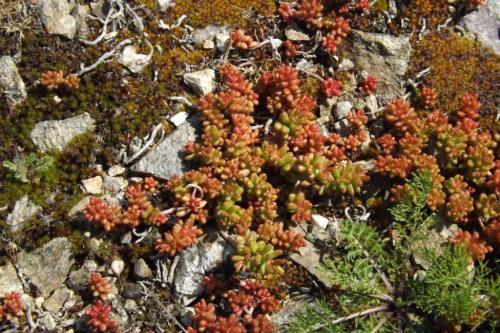
North Portugal :
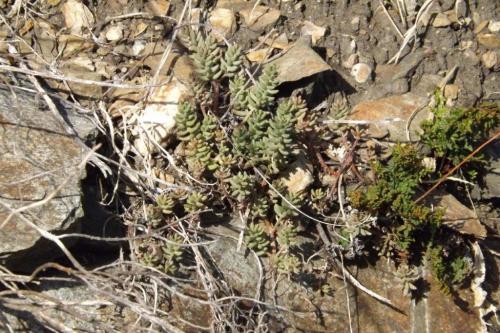
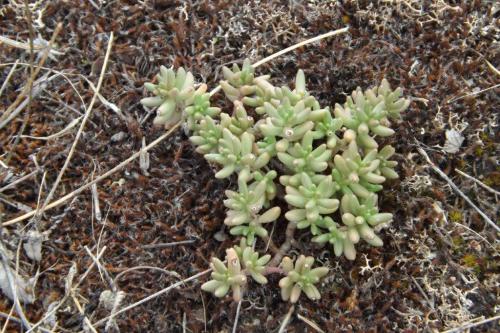
Central Portugal :
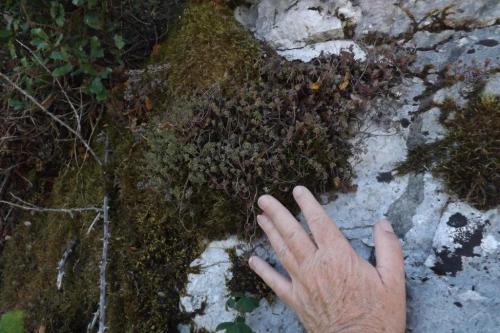
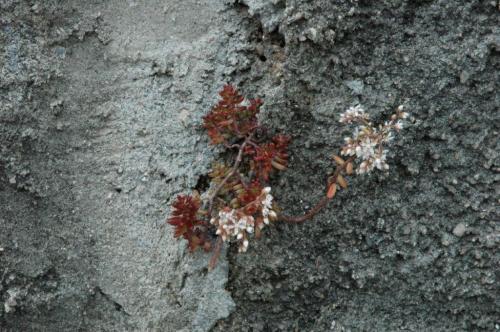
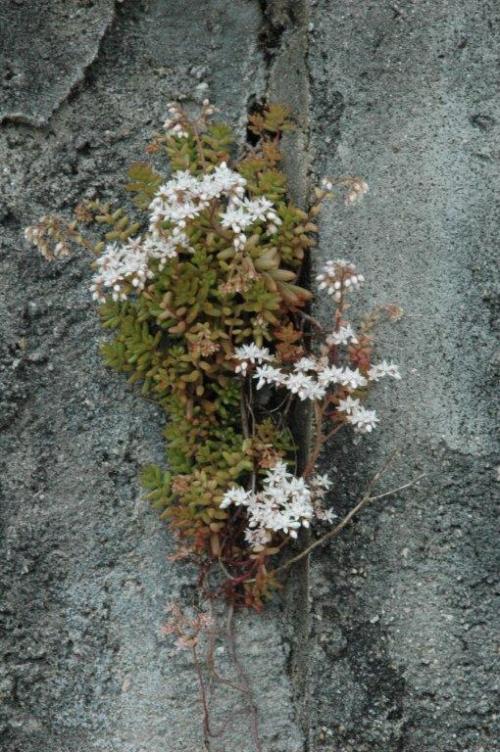
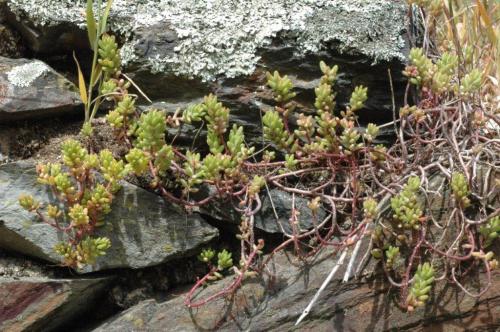
Algarve :
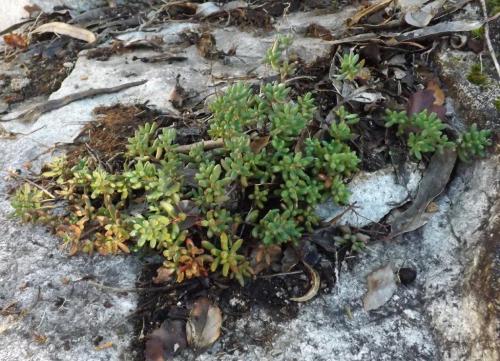
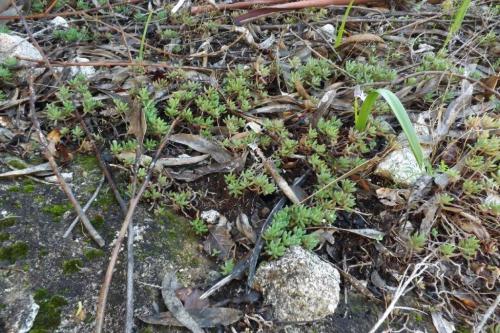
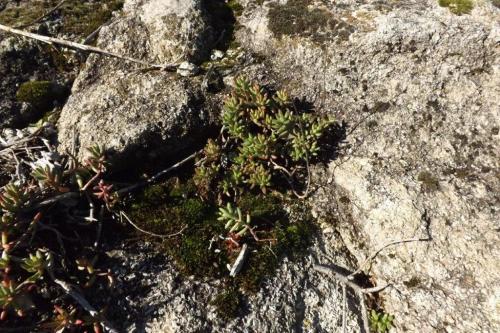
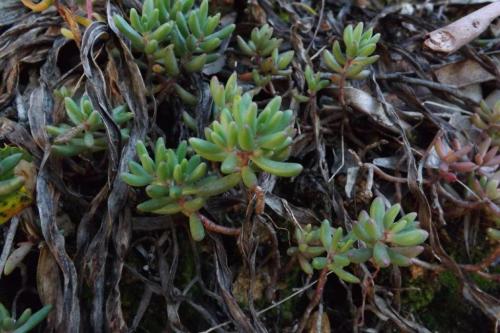
France :
Lac d'Allos (Haute Provence) :
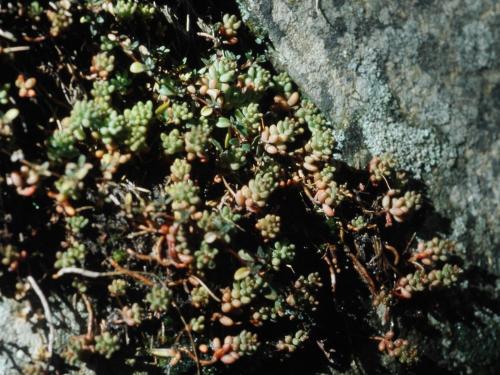
In the southeastern part :
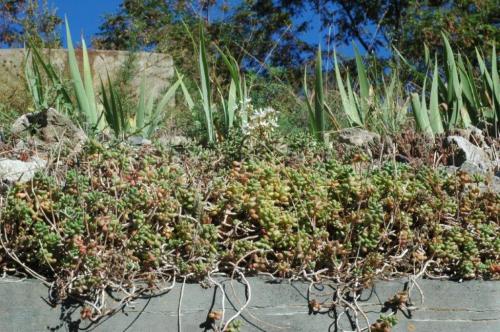
Corsica :
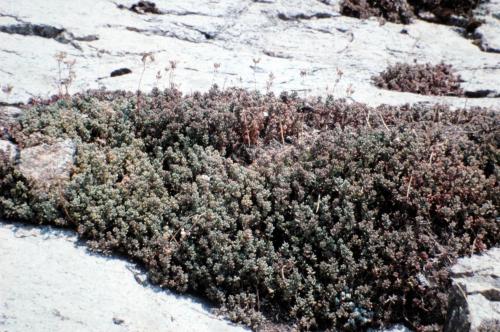
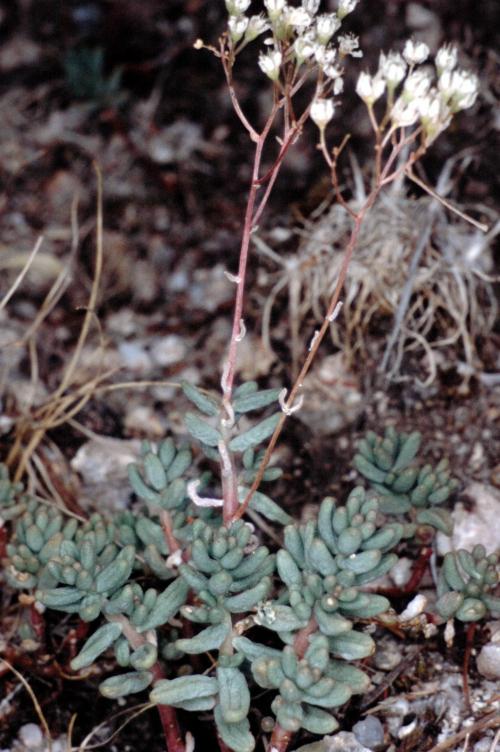
Italy :
Tuscany :
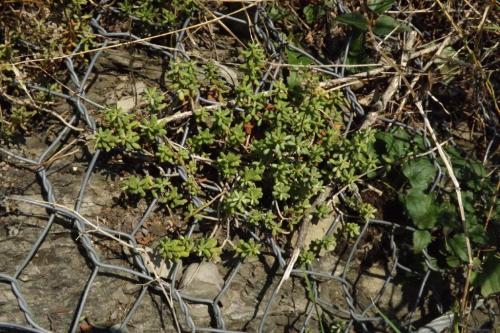
Trentino :
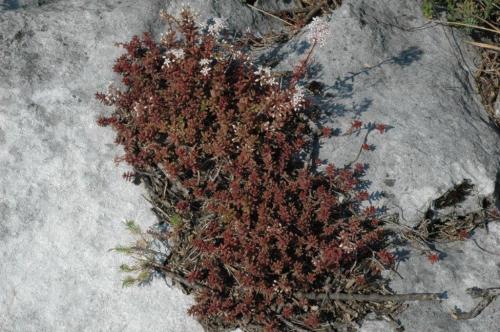
Photos Ray Stephenson
Photos of S. album plants at different locations in France - by Eric Barbier.
Observations sur le Mont Rose - Massif de Marseilleveyre - à Marseille (France, Bouches du Rhône), alt. 10 m, terrain calcaire / calcareous soil.
Crassulaceae observées: Petrosedum ochroleucum, P. sediforme, Sedum acre, S. album, S. dasyphyllum, S. litoreum.
30 mai 2010, avec / with Petrosedum sediforme et P. ochroleucum :
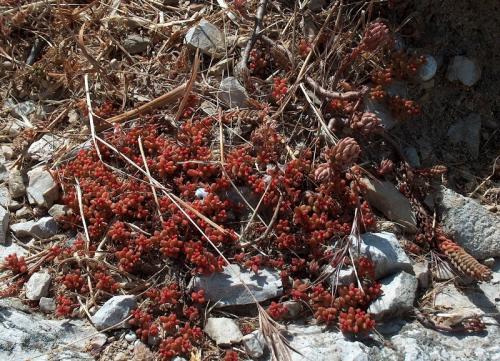
24 septembre 2011 :
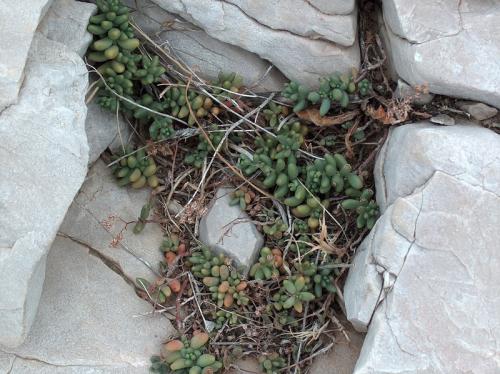
Observation sur le Mont Ventoux (France, Vaucluse), 14 mai 2011, terrain calcaire / calcareous soil.
Crassulaceae observées :
Tête des mines, alt. 840 m : Petrosedum ochroleucum, P. sediforme, Sedum acre, S. album, S. dasyphyllum, Sempervivum calcareum.
Près du sommet, alt. 1900 m : Petrosedum ochroleucum, Sedum acre, S. atratum, Sempervivum tectorum var. guillemotii.
Tête des mines alt. 840m avec / with S. acre et Petrosedum ochroleucum :
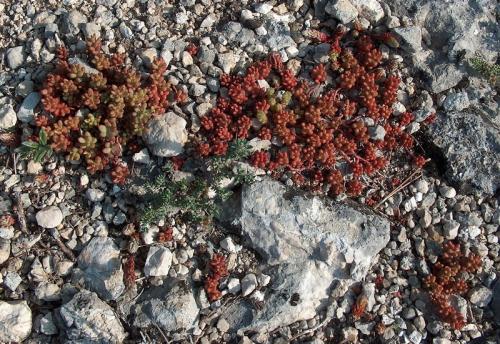
Observations dans le Périgord (France, Dordogne), terrain calcaire / calcareous soil.
Crassulaceae observées : Petrosedum rupestre, Sedum acre, S. album, S. cepaea, S. dasyphyllum.
Jardins de Marqueyssac, 30 juillet 2011, alt. 150 m :
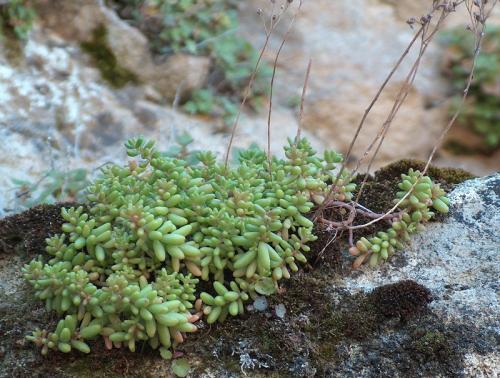
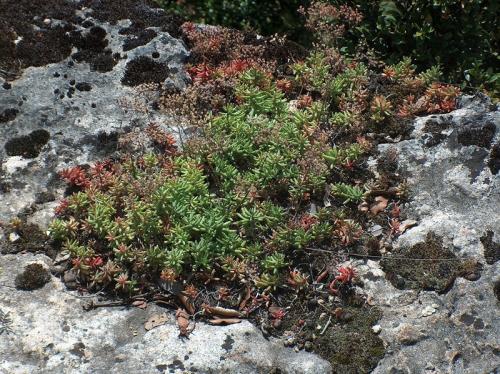
Château de Castelnaud, 30 juillet 2011, alt. 110 m :
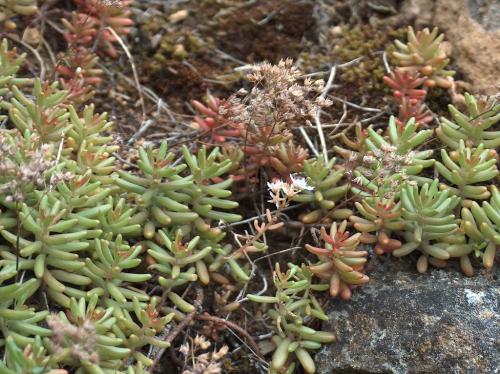
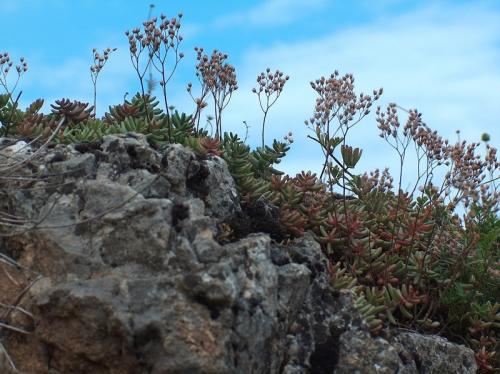
Observations à Allauch (France, Bouches du Rhône), terrain calcaire / calcareous soil.
Crassulaceae observées: Petrosedum ochroleucum, P. sediforme, Sedum acre, S. album, S. dasyphyllum, Umbilicus rupestris.
Notre Dame du Château, alt. 270 m, 16 mars 2007 :
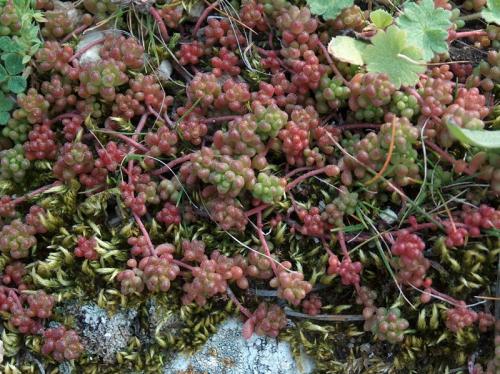
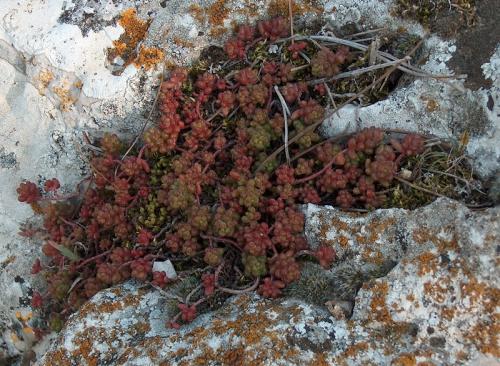
Chemin du Guéridon, alt. 210 m, 22 février 2008 :
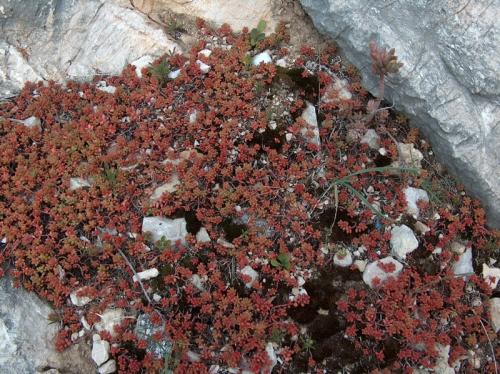
Vallon de l'amandier, alt. 260 m, 19 janvier 2011 :
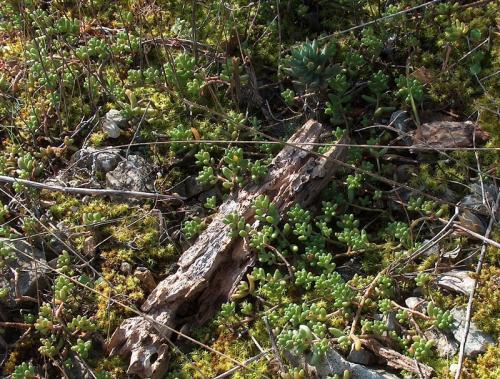
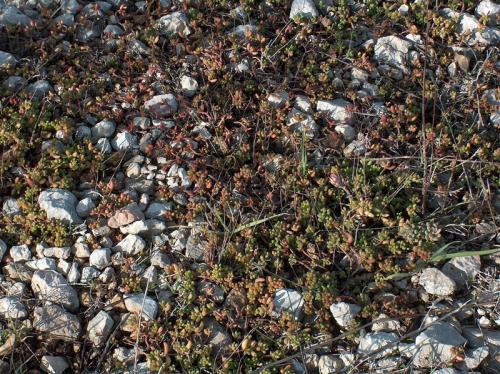
Observation à Villard de Lans (France, Isére, massif du Vercors), alt. 1720 m, terrain calcaire / calcareous soil.
Crassulaceae observées :
- Alt. 1150 m : Petrosedum rupestre (?), Sedum acre.
- Alt. 1720 m : Sedum album, S. atratum.
30 juillet 2008 :
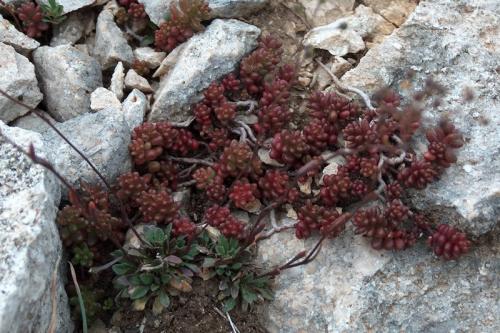
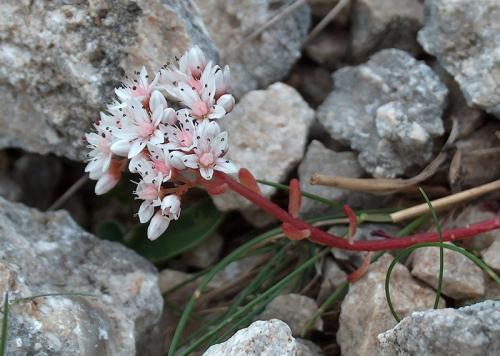
Observation à Bagard (France, Gard, massif des Cévennes), alt. 160 m, terrain calcaire / calcareous soil.
Crassulaceae observées : Petrosedum ochroleucum, P. sediforme, Sedum album, S. dasyphyllum, Umbilicus rupestris.
23 mars 2008 :
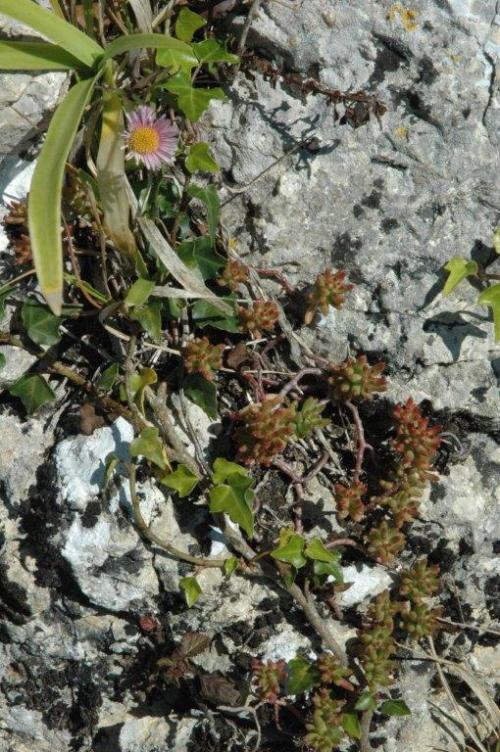
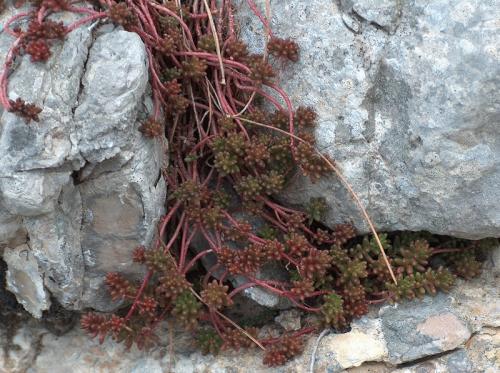
Observation à Millau (France, Aveyron, région des Grands Causses), belvédère du viaduc, alt. 640 m, terrain calcaire / calcareous soil.
Crassulaceae observées : Petrosedum sediforme, Sedum album, S. dasyphyllum.
28 juillet 2011 :
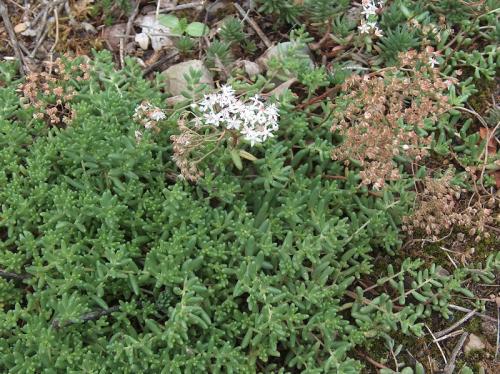
Observation à Vauvenargues (France, Bouches du Rhône, Massif de la Sainte Victoire), alt. 410 m, terrain calcaire / calcareous soil.
Crassulaceae observées :
- Alt. 410 m : Petrosedum ochroleucum, P. sediforme, Sedum album, S. dasyphyllum, Umbilicus rupestris.
- Alt. 960 m : Petrosedum ochroleucum, P. sediforme, Sempervivum calcareum.
17 mai 2009 :
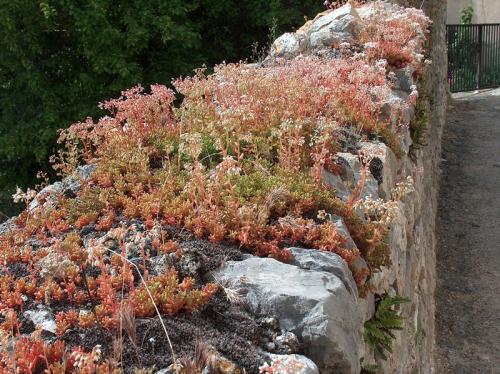
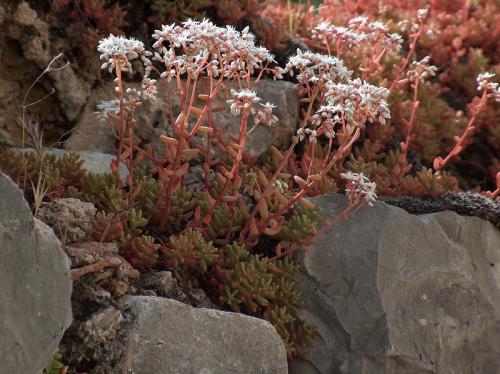
In the Pyrenees :
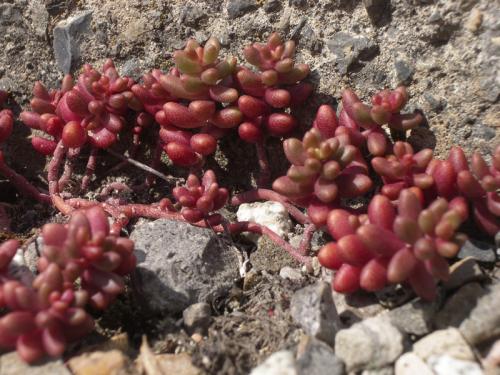
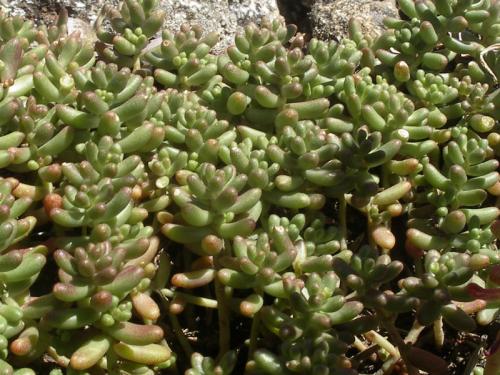
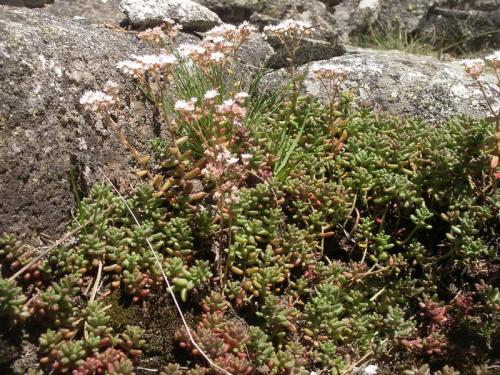
Photos Mateo Lichtenstein
Plants in cultivation :
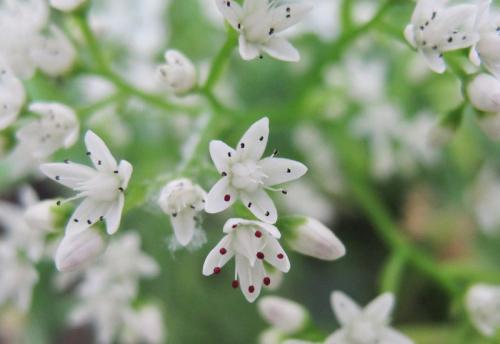
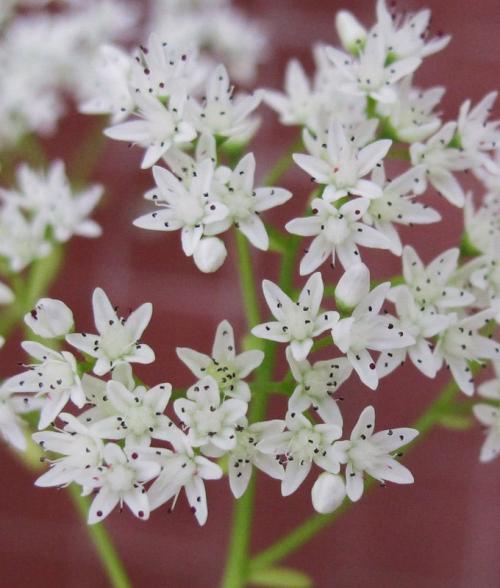
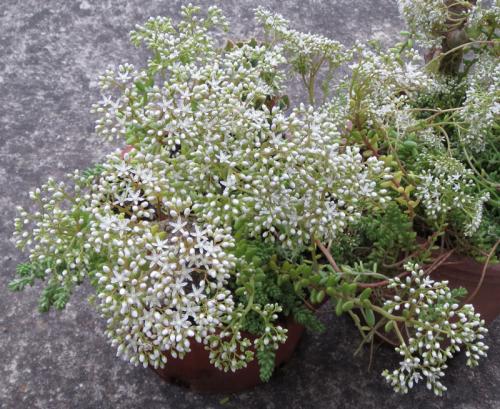
Photo Noelene Tomlinson
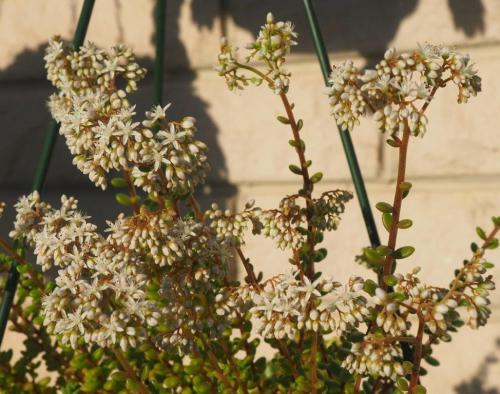
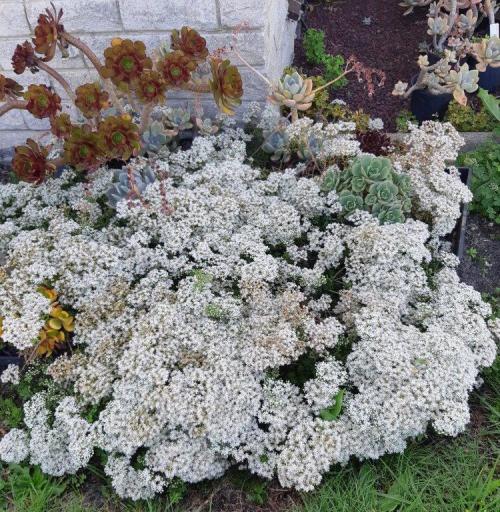
Photos Santino Rischitelli
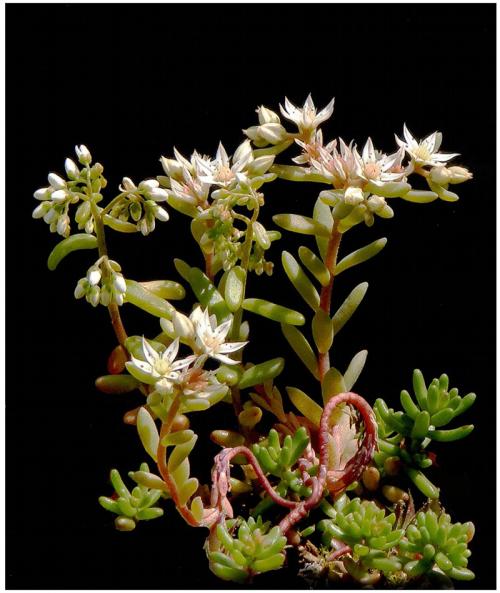
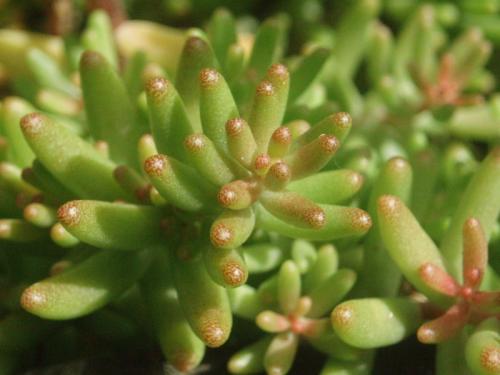
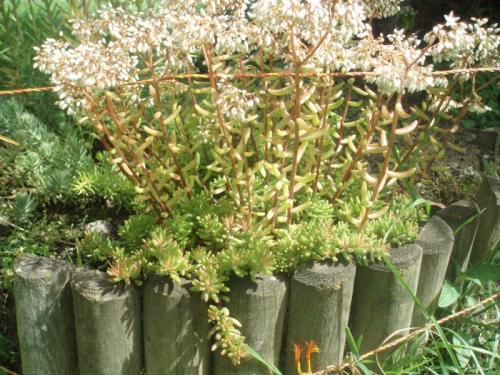
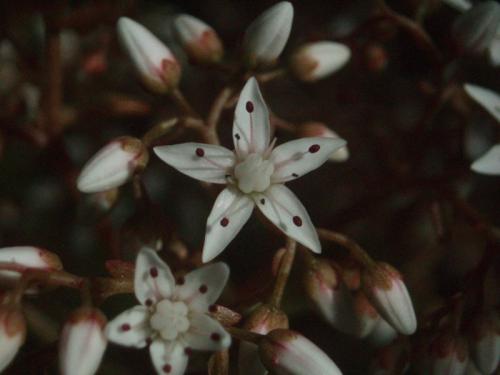
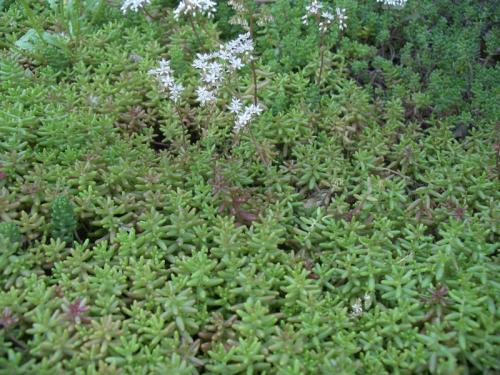
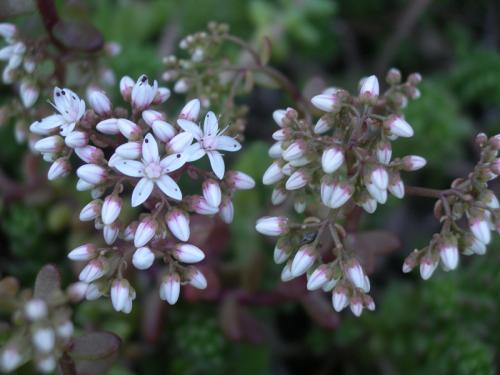
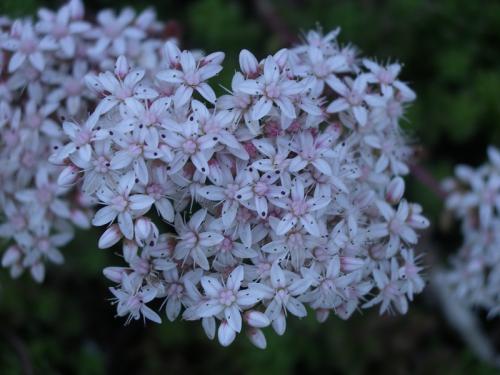
Mateo Lichtenstein
To see more photos : Crassulaceae in the Cévennes mountains
by Eric Barbier
Sedum poussant en carrière d'ardoise de Trélazé, Anjou, France / Sedum in the schist quarry at Trélazé, Anjou, France by David Sorin
A crested plant :
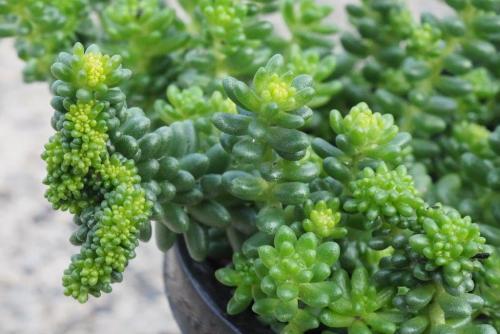
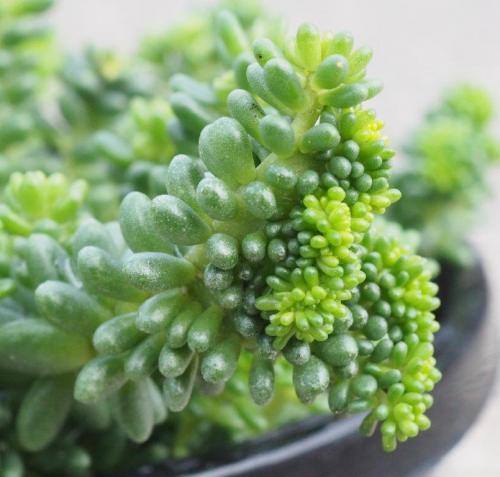
Photos Santino Rischitelli